How to Discover the Hottest Niches with the Amazon Product Opportunity Explorer
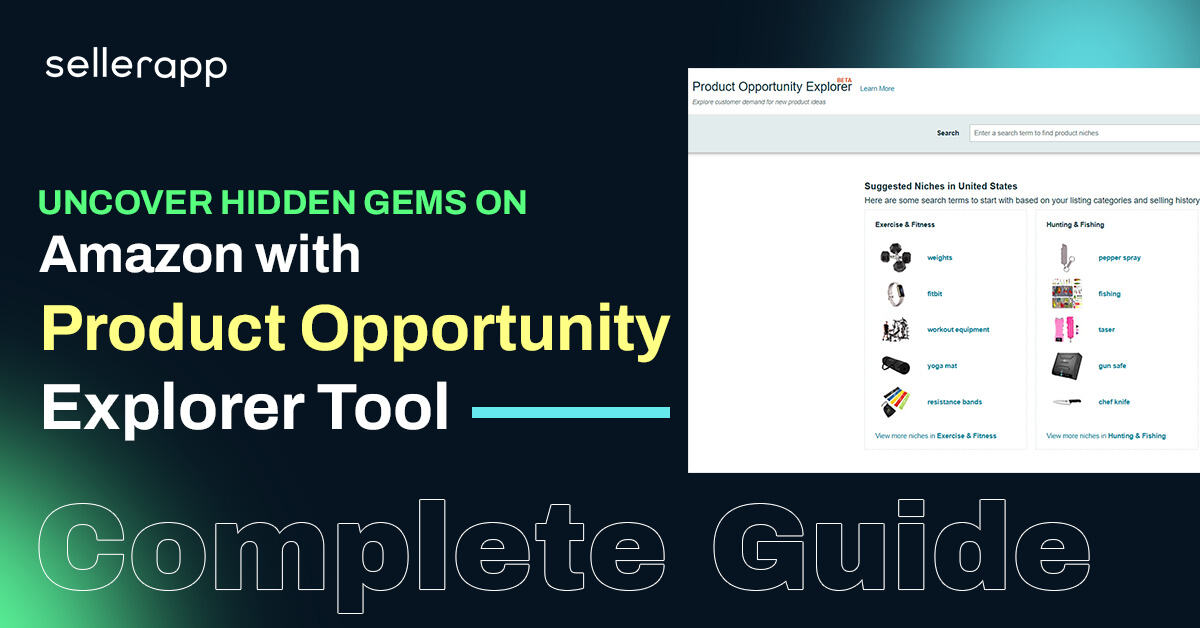
Are you a new Amazon seller struggling to find your niche or an existing seller willing to expand your product line? Do you wish you had access to the same market research resources as big brands to identify unmet customer demands and untapped markets?
As the largest retail marketplace with 1.9 million active sellers, Amazon is a highly competitive marketplace. It requires sellers to spend a huge chunk of money to understand what their customers want and find the gap in the market.
But what if I tell you there are ways to learn about your competitors and find profitable products?
Amazon recently introduced the Product Opportunity Explorer tool to help sellers find customers’ interests without spending a dime.
This article will explain everything you need to know about Amazon Product Opportunity Explorer and how you can use it to find the most profitable niches on Amazon.
Let’s jump into it!
Here is a quick peek into the article:
- What is Amazon Product Opportunity Explorer?
- A step-by-step guide to navigating the Product Opportunity Explorer
- Conclusion
What is Amazon Product Opportunity Explorer?
Product Opportunity Explorer is a free Amazon product research tool designed to help sellers understand customers’ behavior based on different metrics and purchasing behavior. Sellers can quickly uncover new product opportunities and expand their catalog without spending huge amounts of money.
But Product Opportunity Explorer doesn’t just help sellers identify new product opportunities, it also shows recommendations about niches to target based on the seller’s current listing catalog and sales data. You can also search based on category or keyword to fine-tune your search to find the most profitable product for your business.
So whether you’re a seasoned seller or just getting started, consider adding Product Opportunity Explorer to your product research toolkit. With its unparalleled data accuracy and ease of use, it’s a must-have tool for anyone looking to succeed in Amazon’s marketplace.
How to discover a product niche using Amazon Product Opportunity Explorer
The Product Opportunity Explorer is an excellent tool for finding new niches, whether you’re trying to build a new product or want to expand your current product portfolio. Let’s see how to do that:
Step 1: Search with a broad keyword in the search box
- Log in to your Amazon Seller Central account.
- Go to Growth → Product Opportunity Explorer from the left sidebar.
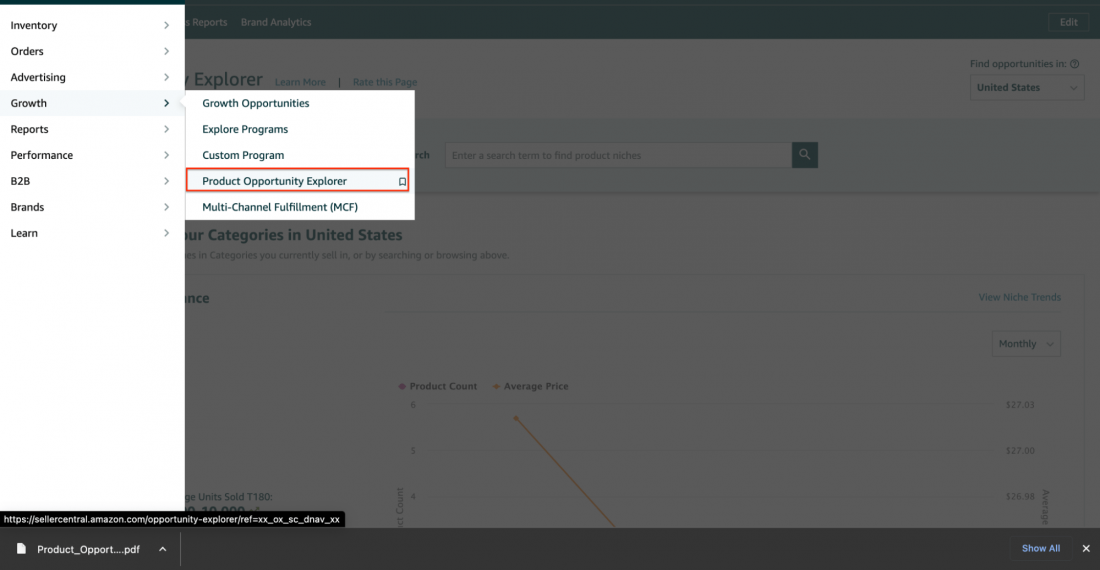
- Once in Product Opportunity Explorer, you can browse niches by category, search for a niche, or use an example niche.
- The example niche section gives you tailored niche recommendations based on the products you currently sell.
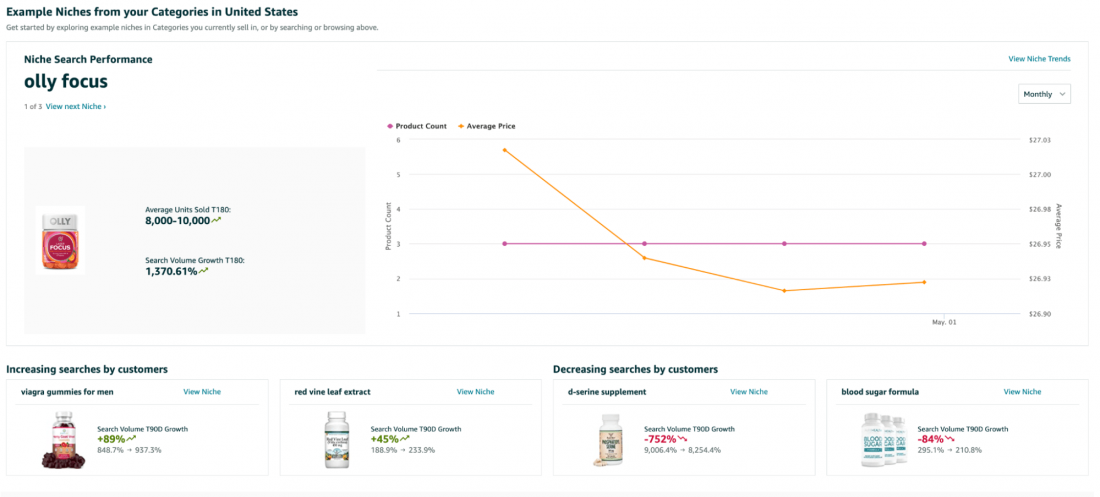
- However, if you want to find a new product, type the keyword into the search bar or search by category.
Let’s say you want to sell a yoga mat product. You can start by typing the keyword in the “Yoga Mat” search bar and click the search button.

- After searching, the tool shows you all the relevant niches, associated search terms, and other key metrics, such as
- Customer Needs: These are the individual niches on Amazon.
- Top Search Term: These are the top three highest-volume search terms for the niche.
- Search Volume (past 360 days and past 90 days): It shows how often shoppers search using the search term. The 360-day column displays the volume for the past 360 days, and the 90 days column shows the volume for the past 90 days.
- Search Volume Growth (past 360 days and past 90 days): It indicates the percentage change in search volume for all search terms for that niche. The 360-day column compares the recent year’s data to the previous year’s data, and the 90-day column compares the current quarter’s data to the last quarter’s data.
- Units sold (past 90 days): It indicates the total number of products sold for the niche in the last quarter.
- # of Top Clicked Products: It shows the number of top products that received cumulatively 90% of clicks and sell after the customer entered a search term in the niche.
- Average Price (past 90 days): It’s the average sell price of all the products in the niche.
- Price Range (past 360 days): It’s the range between minimum and maximum selling price over the last 360 days for products in this niche.
Step 2: Filter the results
Narrow down the search result by adding filters to avoid low-quality products that do not meet the criteria.
For example, let’s say you don’t want to sell low-price products and don’t want the price to go higher than $80, so you can put $50 as the lowest price and $80 as the highest price filter to see only the products between that range.
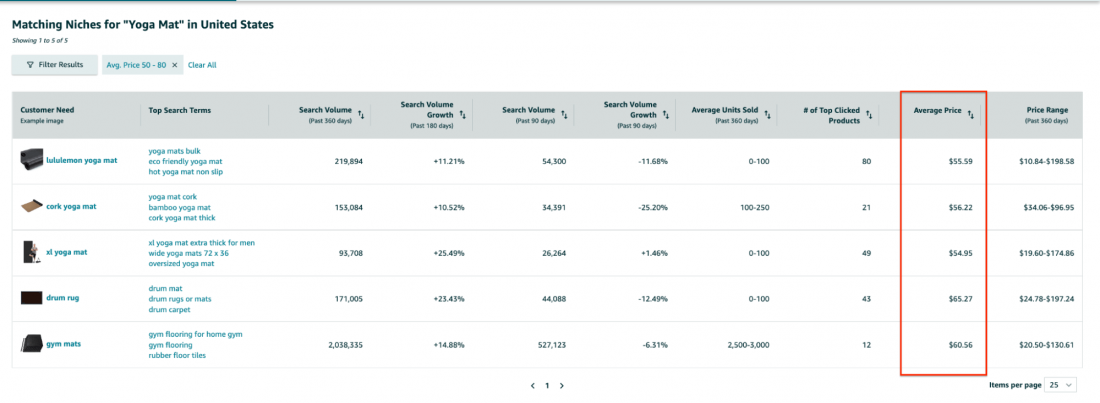
Step 3: Identify a unique niche
In the next step, focus on the Search Volume and Search Volume Growth metrics in 360 days and 90 days to identify high-growing niches. Also, look at the average price to ensure a good profit margin.
For example, here we can see the “xl yoga mat” niche has positive quarterly and yearly growth trends and decent pricing. So we can choose the niche for further analysis.

Step 4: Evaluate the niche
Once you have identified a niche, it’s time to explore its potential. Click on your selected niche, in this case, “yoga mat,” to view the niche details page. Here you’ll find five tabbed sections with different information.
- Products
- Search Terms
- Insights
- Trends
- Customer Review Insights
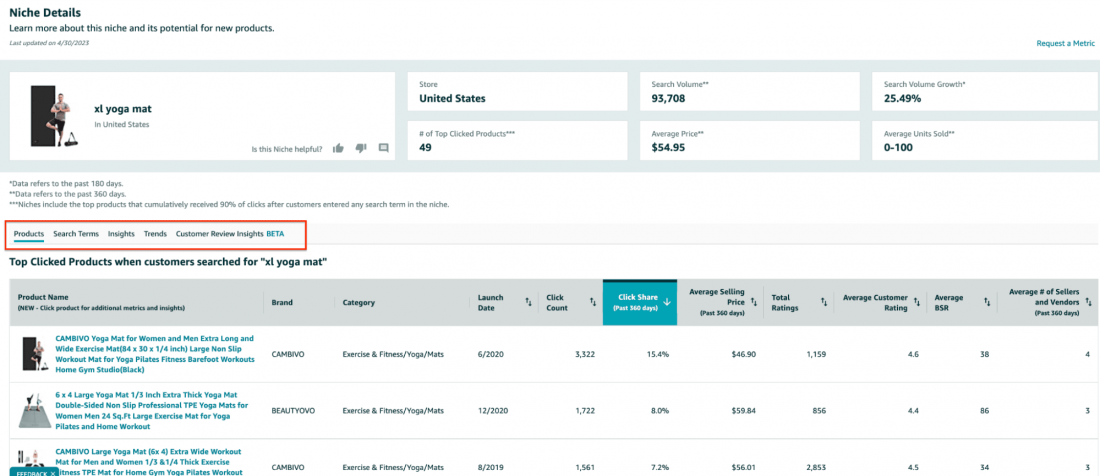
Products
This section lists all the products within a niche that cumulatively receive 80% of clicks
after customer searches, along with multiple metrics:
- Click Count
- Click Share (Past 360 days)
- Average Selling Price (Past 360 days)
- Total Ratings
- Average Customer Rating
- Average BSR
- Average # of Sellers and Vendors (Past 360 days)
You can easily understand the following aspects of a niche from the product tab.
Identify ease of entry to the market.
If you see the click share is high for a product with a high number of Total Ratings, it means customers are giving more importance to ratings and reviews to buy the product.
For instance, this example shows that the highest click-share product has a decent number of high ratings. That means shoppers look at the ratings and reviews to make the purchasing decision.

On the other hand, if the click share is within the same range for all the products, that means ratings don’t influence the purchasing decision much, and it might be an easier niche to enter into the market.
Understand price sensitivity
If you notice the click share is higher for products with low average selling prices (Past 360 days), it indicates that these products are more price sensitive, and customers are more likely to buy the product with the lowest price.
However, if you see the click share isn’t higher for the low average selling prices (Past 360 days) products, it means customers look at quality, reviews, and other criteria to buy the product and don’t necessarily mind paying a premium for high-quality products.
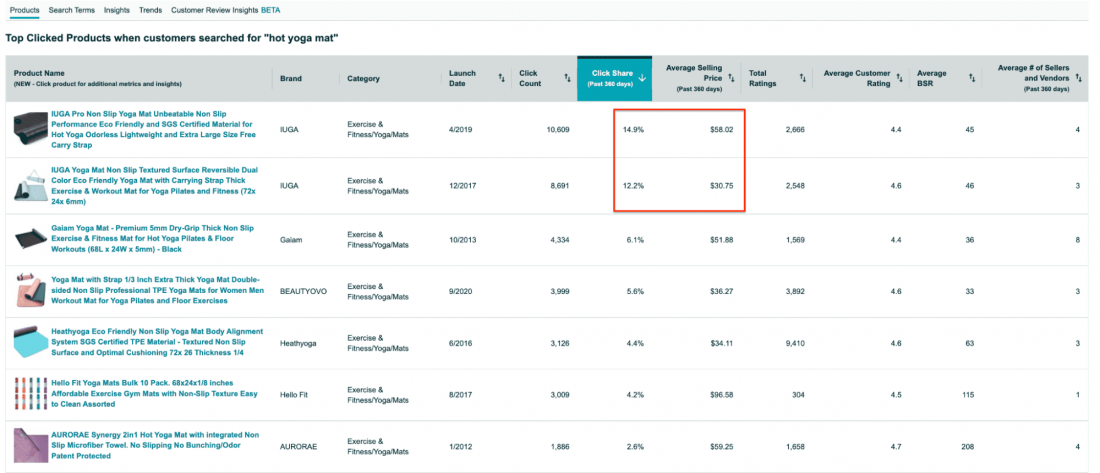
In this example, you can see a $58.02 product has a 14.9% click share, and a $30.75 product has a 12.2% click share. It shows that the niche is not that price sensitive.
Understand content format
By looking at the click share, you can understand which type of product title and images gets the most attention from the shoppers. This metric helps you structure your own product listing to maximize clicks.
In this example, the products with a clear picture showcasing the brand image get the maximum click share. Also, notice that these product titles have the dimensions clearly mentioned in the title.
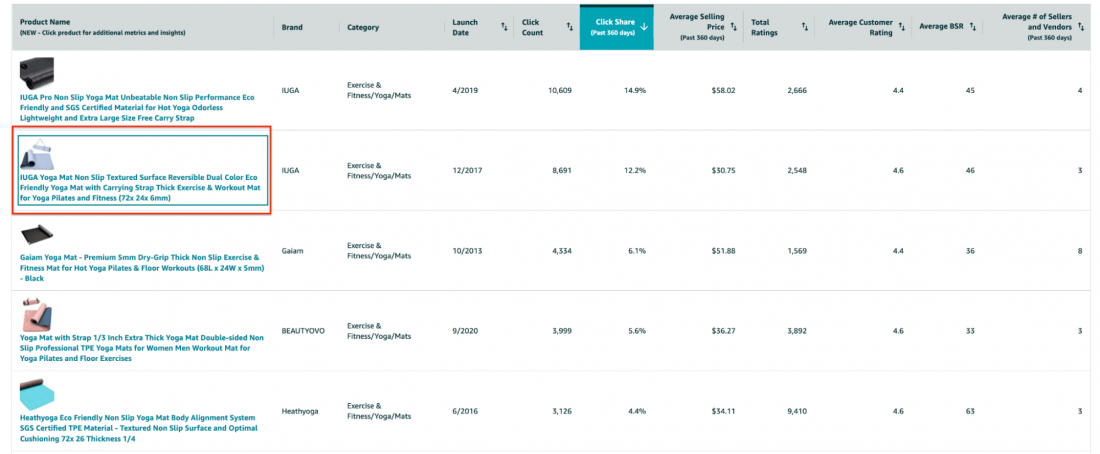
Once you analyze and identify a product, click on it for additional metrics and insights.
Note: You can also use the Product Tracking feature on the SellerApp Dashboard to track the product for further analysis.
Product Metrics
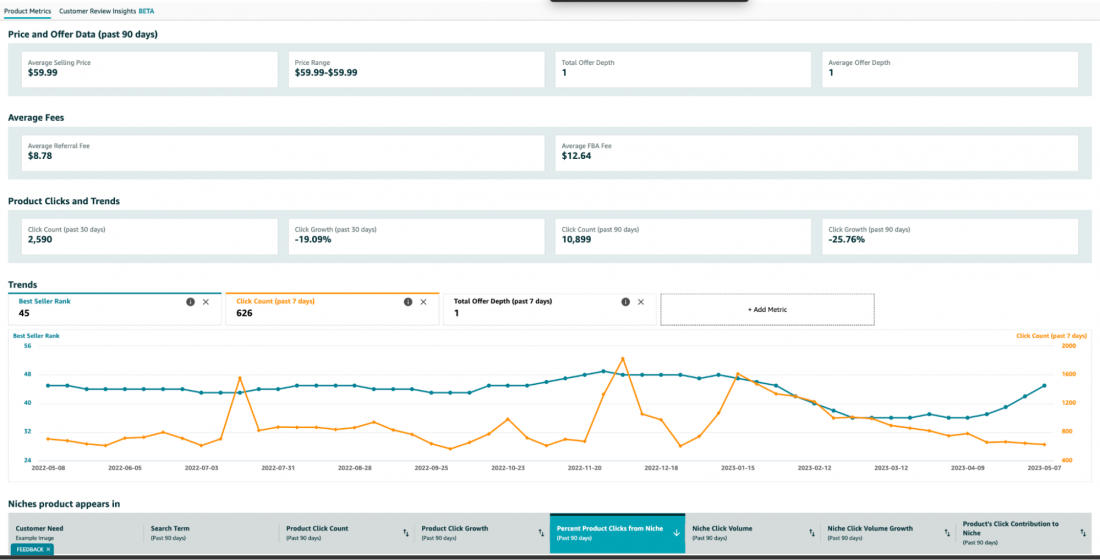
The product metrics tab shows you five different types of data:
- Product and Offer Data (past 90 days)
- Average Fees
- Product Clicks and Trends
- Trends
- Niches product appears in
Product and Offer Data (past 90 days)
The following section provides insights into a product’s pricing and offers trends over the past 90 days. The insights include,
- Average Selling Price: It’s the average featured offer price over the past 90 days
- Price Range: It’s the range of minimum and maximum featured price for the last 90 days
- Total Offer Depth: It’s the maximum number of offers the product had in the last 90 days
- Average Offer Depth: It’s the average number of offers for the product over the past 90 days weighted by page views.
By analyzing these metrics, you can understand your product’s pricing in the niche.
Average Fees
This section shows the two most essential fees that help you calculate the approximate profit margin for the product.
- Average Referral Fee: The average referral fee paid for each unit sold over the past 360 days.
- Average FBA Fee: The fee sellers have to pay Amazon for each unit sold over the past 360 days.
Product Clicks and Trends
It shows some important metrics that give you an idea about the product’s growth potential.
- Click Count (past 30 days): The total number of customer clicks from any search term over the past 30 days.
- Click Growth (past 30 days): The trend of click count compared to the previous 90 days.
- Click Count (past 90 days): The total number of customer clicks from any search term over the past 90 days.
- Click Growth (past 90 days): The trend of click count compared to the previous 90 days.
For example, If the click growth for the product is negative for the past 30 days but positive for the past 90 days, it indicates a temporary decline in sales with an overall positive trend.
On the other hand, if the click growth is negative for both periods, further analysis from the “Trend” graph is required to draw a conclusion.
Trends
The trends section shows the past year’s trend for the BSR rank, click count and the total offer depth for the product.
For example, this is a trend graph for a yoga mat product.

If you notice carefully, you can understand the clicks for the yoga mat peaked during the new year, when many people make resolutions to be fit and healthy, and then drop for the rest of the year.
It showcases that this product is sessional, and the click growth might be negative during
the rest of the year.
Therefore, if you intend to sell a product with year-round demand, this type of product may not be ideal for you.
“Niches product appears in” Section
This section shows the specific niches the product appears in on Amazon. Along with the niches, it also shows some metrics, such as:
- Search Term (Past 90 days): The top 3 search terms in a niche drive the most clicks to this product.
- Product Click Count (Past 90 days): The number of clicks on this product over the past 90 days from all the search terms in this niche.
- Product Click Growth (Past 90 days): The percentage of overall product clicks in a given niche.
- Percent Product Clicks from Niche (Past 90 days): The percentage of overall product clicks driven by the niche.
- Niche Click Volume (Past 90 days): The total clicks driven by search terms in this niche across all products.
- Niche Click Volume Growth (Past 90 days): The growth trend of niche click volume compared to the prior 90-day period.
- Product’s Click Contribution to Niche (Past 90 days): The percentage of clicks the product contributes to a niche.
This section lets you understand which niche to target if you sell a similar product. For example, here you can see the “ear clips headphones” have the highest 90-day growth trend. So if you sell a similar product, target this niche to maximize growth.

Customer Review Insights
The Customer Review Insights section provides a detailed analysis of the positive and negative feedback that a product receives on Amazon. It makes finding a gap in the existing products much easier for you.
For instance, in the example given, some negative reviews of a “yoga mat” mentions issues with smell and slipping. So, you can develop a product that resolves all these customers’ problems to stand out from the competition.
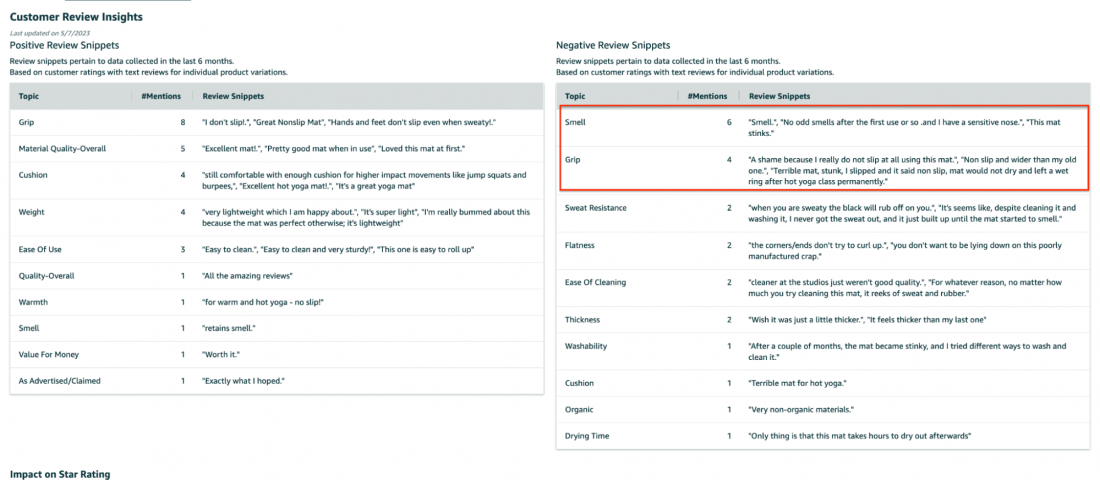
In addition, the tool also provides a bar chart that demonstrates the impact of different aspects of the product on its star rating. It allows for the prioritization of high-priority issues that require immediate attention.
For instance, in the Negative Review Snippets, you see that both “Grip” and “Smell” have received negative reviews for the “Yoga Mat” product. However, when considering the Impact on Star Rating, you can see that “Grip” has more positive than negative impact, while “Smell” has the opposite. Therefore, solving the smell issue should be prioritized when creating a new product.
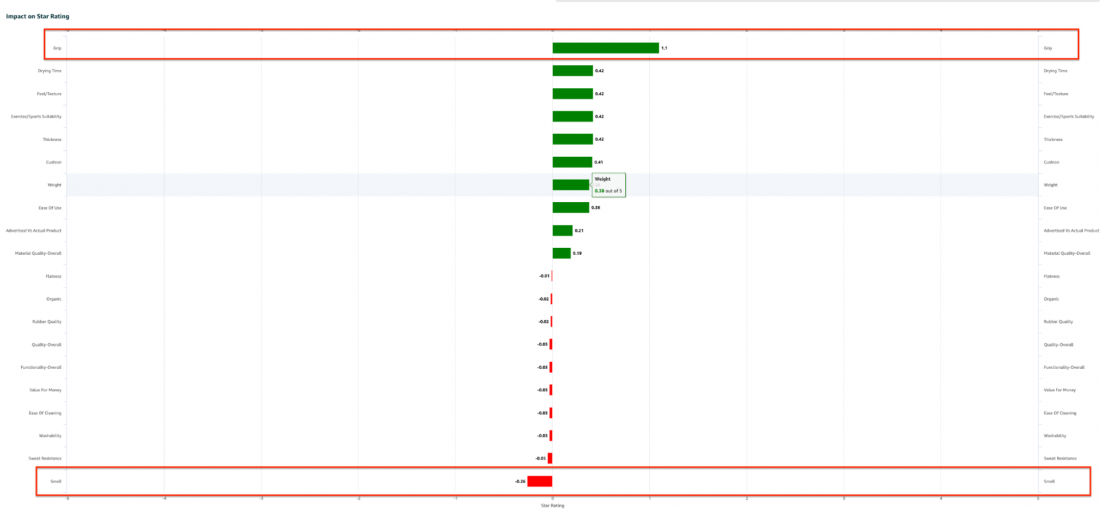
Search Terms
The search terms tab on the Niche Details dashboard offers valuable insights into customer search behavior and the performance of search terms.
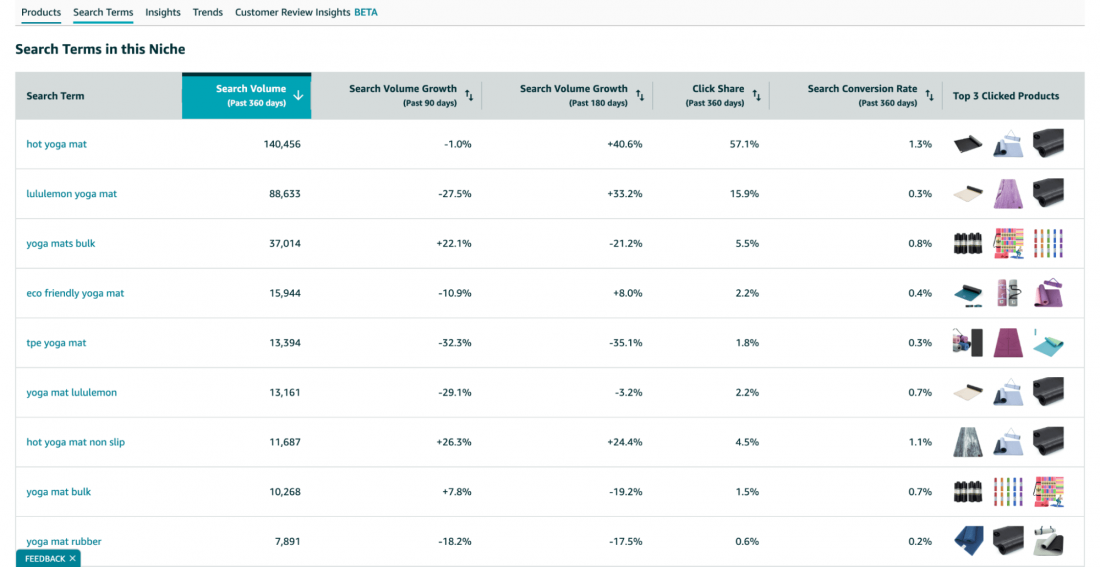
This section contains the top Amazon customer search terms for a niche, along with a few metrics such as,
- Search volume (past 360 days): It shows the search volume for the search term on Amazon for the past year.
- Search volume growth (Past 90 & 180 days): It shows the change in the search trend of the search term quarterly and bi-yearly. It helps you indicate seasonality in the niche.
For instance, if a search term experiences high growth over the past 180 days but negative growth over the last 90 days, it may indicate a short-term downward trend in demand for the product. However, this trend may reverse once the product season arrives.
- Click share (past 360 days): This metric compares the number of clicks for the search term in the niche to other search terms over the last 360 days.
For example, “hot yoga mat” has a click share of 57.1% means customer search for this search term 57.1% times to find a product in the niche.
- Search conversion rate (past 360 days): It indicates the number of purchase rates of products from all search terms within this niche in the past 360 days.
Track the highest converting keywords from this listing using the SellerApp Keyword Tracking tool to
- Optimize your future listing
- Optimize your future PPC campaigns
- Find low-competition keywords
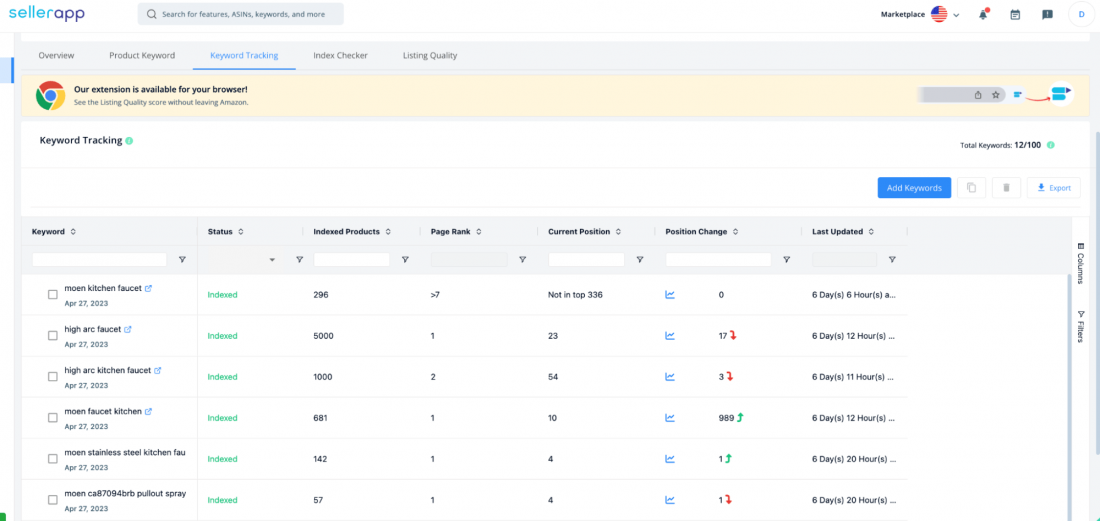
Pro Tip: If you already have a product in the niche, use the SellerApp Product Keyword tool to see if these high-converting search terms exist in your listing. If not, optimize your product listing with these keywords to maximize conversion.
- Top 3 Clicked Products: It shows the three most-clicked products for the search term, and if you decide to create a product in the niche, these will likely be your top three competitors.
Insights
The insights section gives you a thorough understanding of the different dynamics in the niche, including how saturated it is, product launch potential, overall customer experience, and many more.
By using metrics such as the “Average Out of Stock Rate,” “% of Prime products,” and “% of Products Using Sponsored Products,” you can quickly identify high-impact product opportunities.
For example, a low “% of Prime Products” means sellers can quickly gain momentum for new products by adding a prime offer.

Similarly, low “Number of Products” and “Click Share” values indicate the perfect niche to launch a new product, as this niche has low competition.
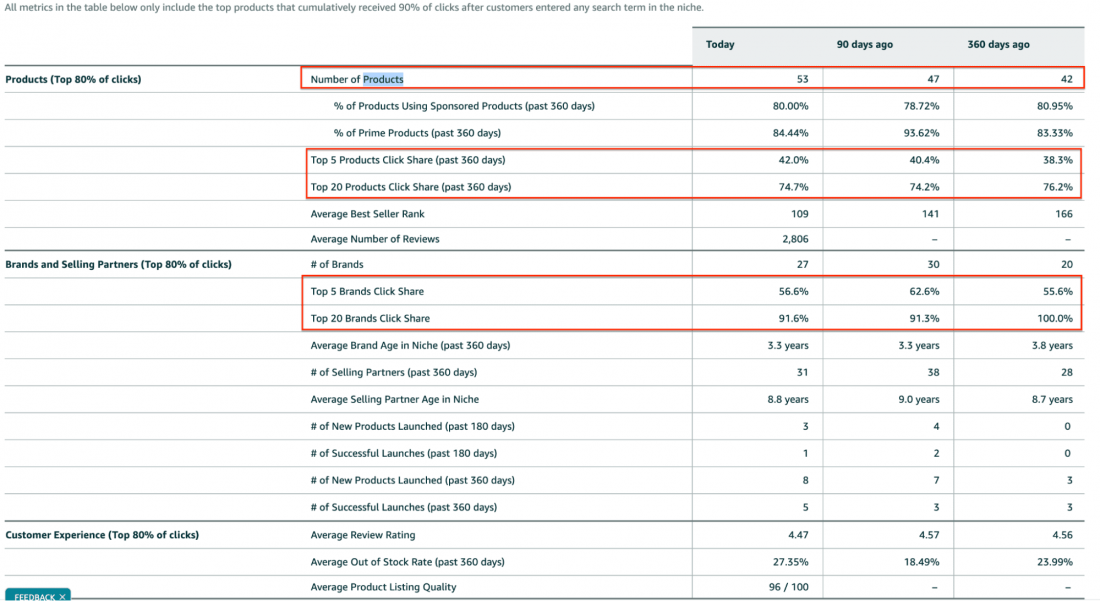
If the niche has a low “Number of Products” and high “Click Share” value, it indicates that a specific brand or a product dominates the niche, and new products might not stand a chance here.
If you find a niche with a high “Number of Products” value and low “Click Share,” use the “# of Successful Launches,” “% of Products Using Sponsored Products,” and “Average Review Rating” metrics to determine if the niche has good launch potential.
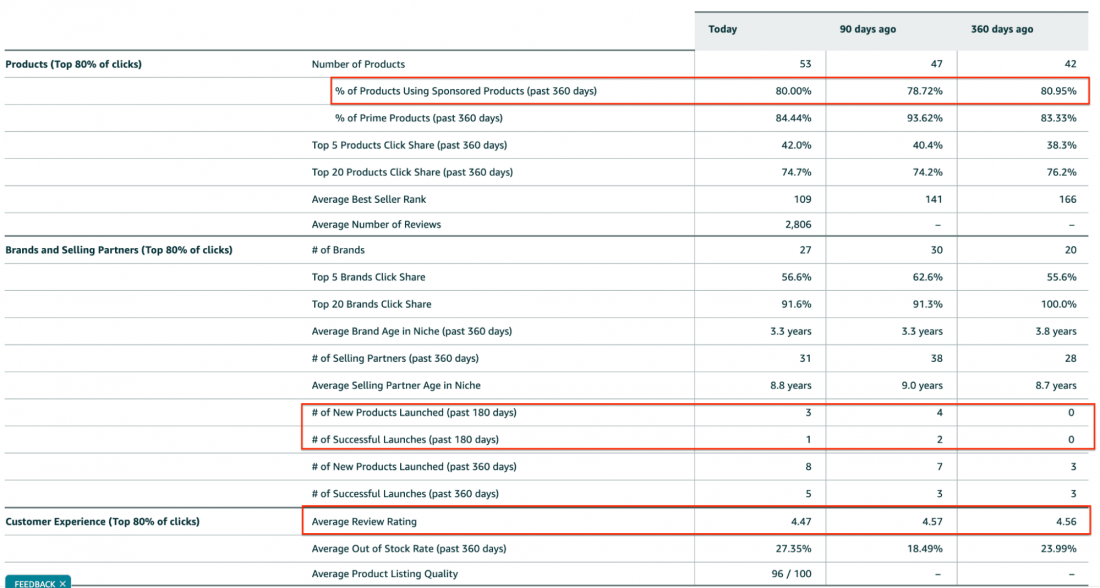
Recommended Guide: What is Brand Gating On Amazon?
Niche Trends
The Trends section provides various metrics to help you understand niche trends. These metrics include.
- Search volume,
- Product count,
- Brand count,
- Average price,
- Search conversion rate,
- Selling partner count
Note: The data is shown from the last seven days.
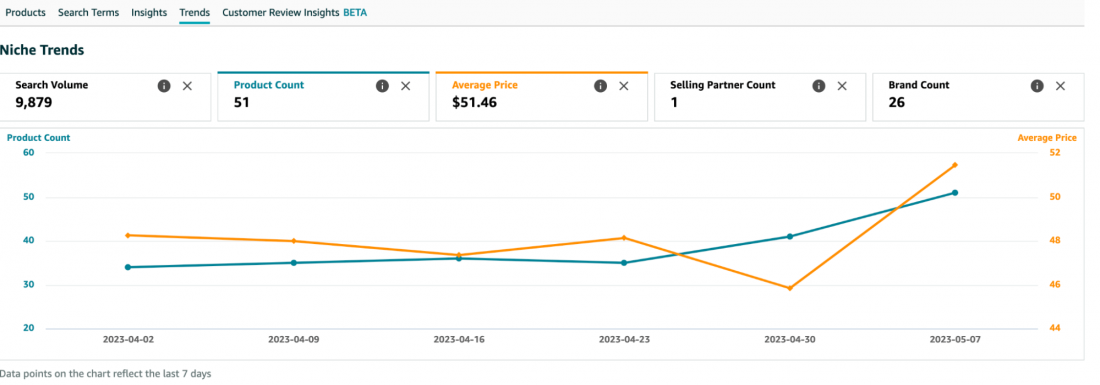
You can use the trend graph below to understand seasonal customer behavior and how you can optimize your e-commerce strategy.
For instance, you can compare search volume with search conversion rate to understand if customers are converting well for the niche.
Similarly, Comparing selling partner count, brand count, or product count with search volume will help you understand the overall competition in the niche.
Recommended read: What are the reasons for losing the Amazon Vendor Buy Box?
Customer Review Insights
Similar to the product-level customer review insights, this section provides a detailed analysis of the positive and negative reviews of the entire niche on Amazon.
It helps you identify gaps in the niche and improve your e-commerce strategy.
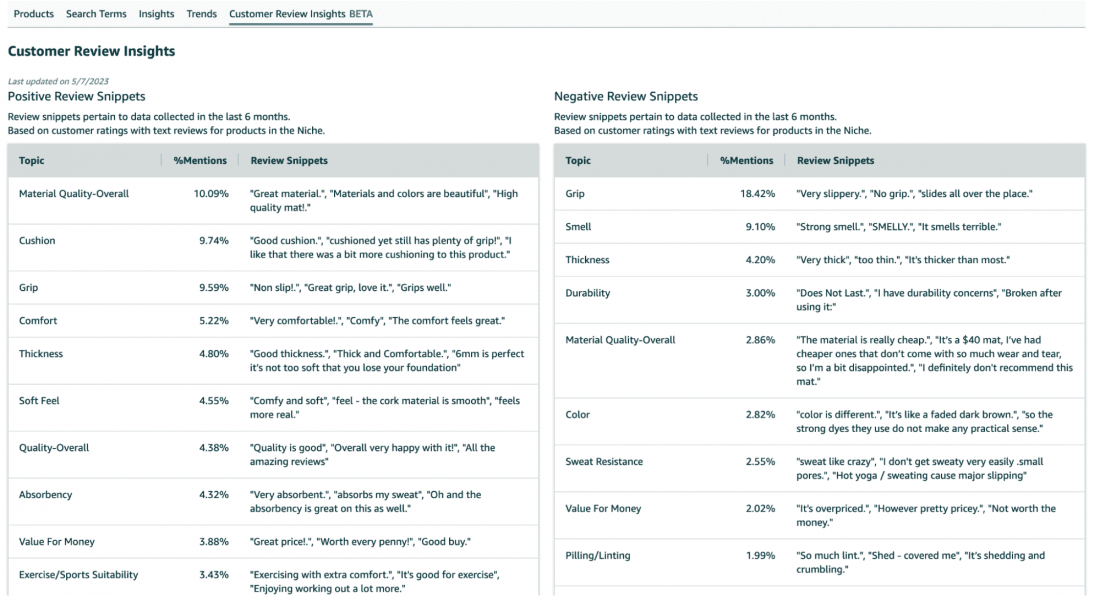
Final Thoughts
In today’s highly competitive e-commerce landscape, finding profitable product niches is crucial for the success of any Amazon seller.
And using Amazon’s Product Opportunity Explorer tool is an excellent way to start your research and identify the most promising niches and product opportunities.
However, to bring your product idea to reality, you need a powerful marketplace tool that can help you track multiple products, conduct keyword research, and connect with reliable suppliers.
That’s where the SellerApp 360-degree marketplace tool comes in.
In the below video, Ankita Patil, Product Evangelist at SellerApp, will present you with the Amazon keyword research tool that every successful seller should have in their arsenal.
SellerApp Keyword Suite Walkthrough : Discover Amazon Competitor Keywords
Watch this video on YouTube
With its advanced features, SellerApp can streamline your product research and launch process, making it more efficient. From creating product listings to launching your products on Amazon, SellerApp provides all the tools you need to succeed in the Amazon marketplace.
So, if you’re serious about your Amazon business and want to take it to the next level, don’t hesitate to sign up for a 7-day free trial of the SellerApp dashboard today.
Sign up now and unlock the power of data-driven success for your Amazon business.
Additional Guide:
The future of Amazon selling: A comprehensive report by Payoneer & SellerApp.
How to calculate the break-even RoAS for Amazon?
How to optimize your ASIN matrix with SellerApp
How do you transfer ownership of an Amazon seller account?



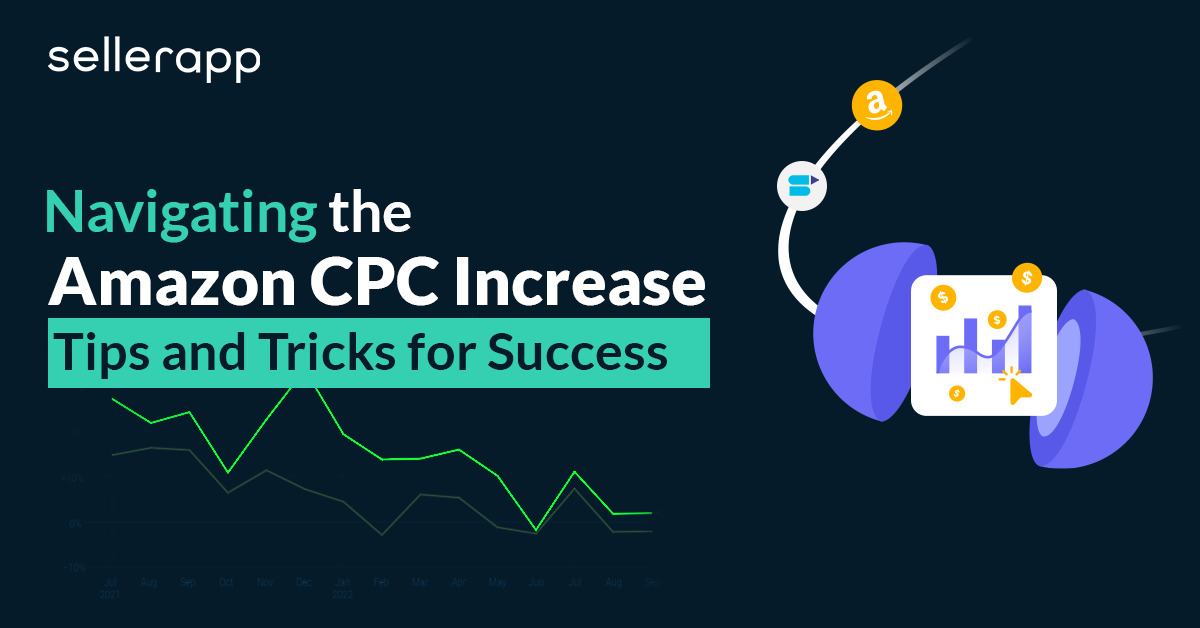

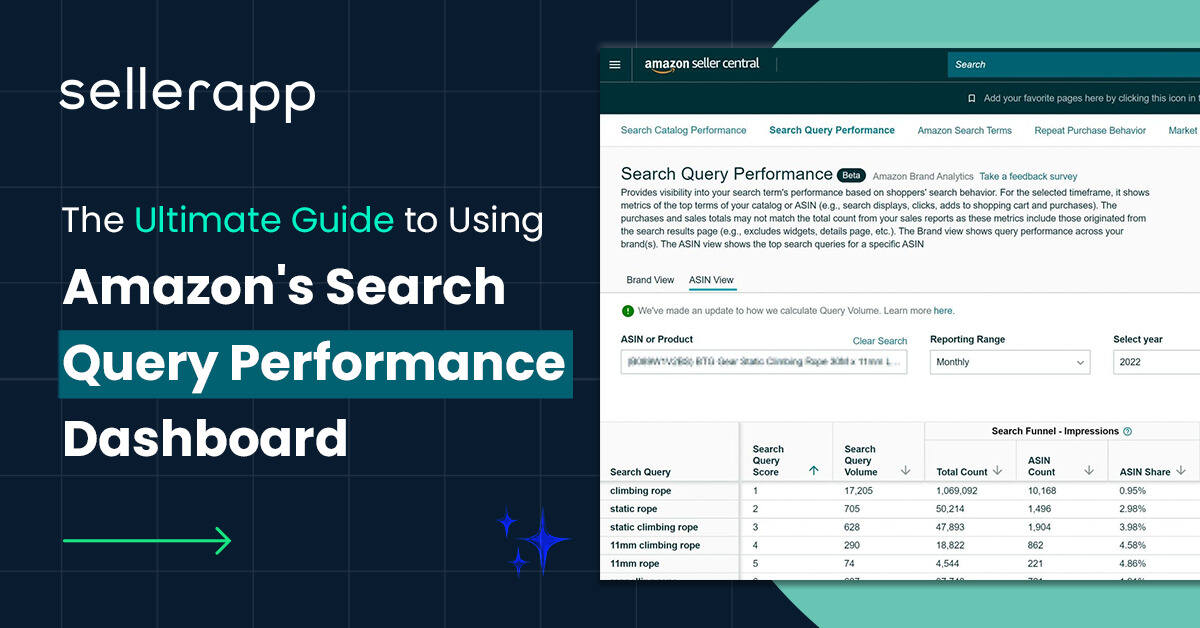


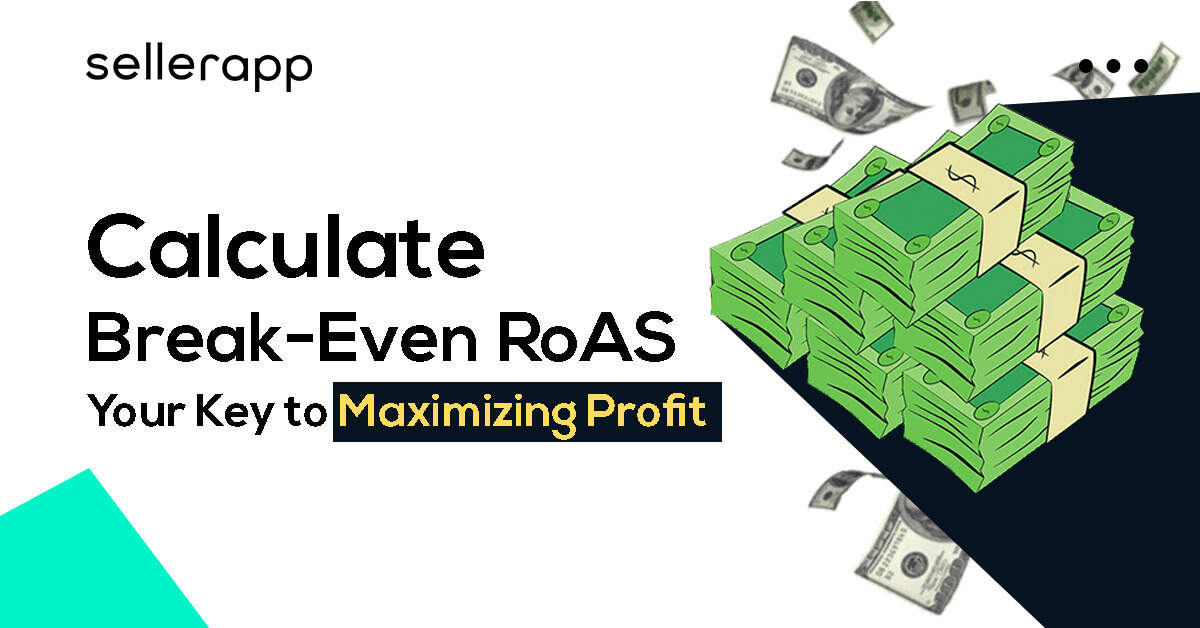

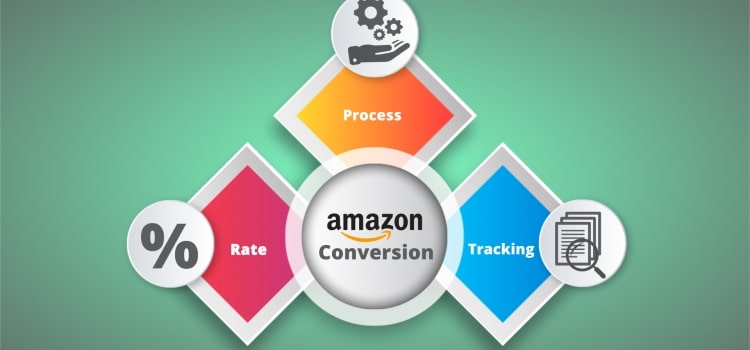
Clare Thomas
March 15, 2024Glad you liked the article.
Vincent Paul
March 3, 2024Wow, awesome blog!!
Clare Thomas
March 15, 2024Thankyou